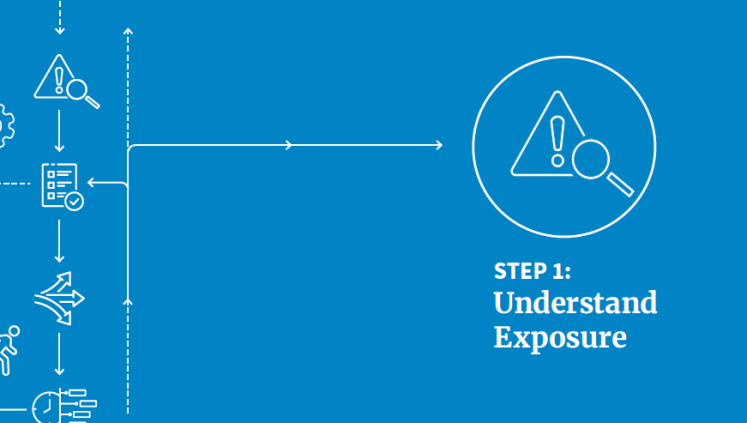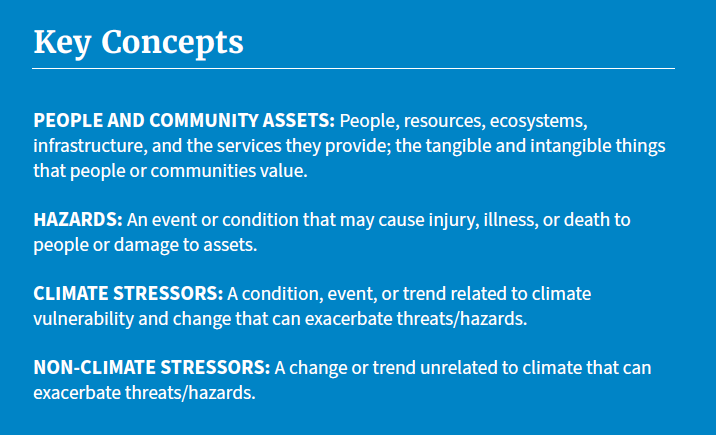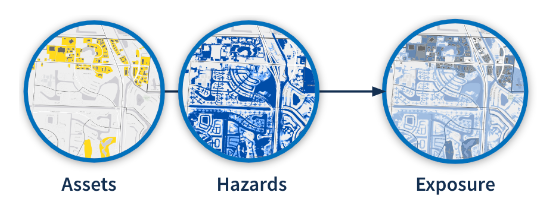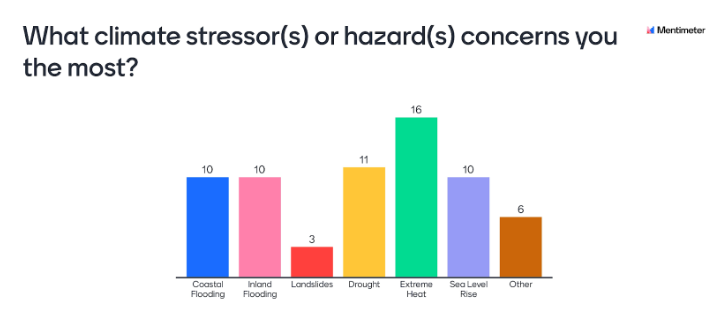Steps to Resilience Training Recap: Understanding Exposure

Session 2: Step 1, Understand Exposure
Session 2 of the Steps to Resilience training program focused on Step 1 of the Practitioner’s Guide: Understanding Exposure. Step 1 guides participants in exploring and gathering information about community assets, hazards, and climate and non-climate stressors with the ultimate goal of understanding a community’s relationship to exposure.
[object Object]

Page 17, Practitioner’s Guide to the Steps to Resilience
Thoroughly exploring these key concepts and gathering information to understand exposure will eventually be taken into Step 2, which will be covered in the next training session. The concept of exposure, where community assets coincide with hazards, is shown below:

Learning Objectives
In order to complete Step 1 and be able to move on to Step 2, one of the main learning objectives for participants was how to identify people and community assets, hazards, and stressors.
People and community assets are the tangible and intangible things that people care about and that make their community unique. Determining which places, natural resources, infrastructure, and services the community agrees are important to protect and the conditions that could threaten them is an important part of this process.
Participants explored the use of tools such as Climate Explorer and NOAA State Climate Summaries to begin building an understanding of what hazards affect their community. When asked during the session what climate stressor(s) or hazards(s) concern participants the most, the majority indicated that they were concerned about Extreme Heat.

The goal of exploring all of this information about community assets, hazards, and stressors is to eventually build an inventory of data that can be used in Step 2 to create an actionable vulnerability and risk assessment for the community. Outside of the training session, participants were asked to continue to explore these Step 1 concepts, as well as craft a potential impacts matrix for the communities they have chosen to explore throughout the remainder of the program.
A potential impacts matrix helps to determine if a hazard has the potential to impact a community asset. It establishes the potential impacts that will be evaluated and measured in a structured way for communities to make informed decisions. An example from the Practitioner’s Guide is shown below. Exposure of an asset to a hazard, a potential impact is marked with an “X”.

Session 3: Step 2, Assess Vulnerability and Risk
The next session will cover Step 2 of the Steps to Resilience. Participants will discuss these concepts as they are key elements of an actionable vulnerability and risk assessment. The session will also cover using these elements to develop and articulate findings. The CCRE grantee teams, National Wildlife Federation and EcoAdapt, that co-produced Incorporating Nature-based Solutions into Community Climate Adaptation Planning will also be leading part of the session to highlight how Natural and Nature-based Solutions fits into the Steps to Resilience framework.
This session will set the scene for how Practitioners bring forward work from previous sessions into not only Step 2, which is the focus of this session, but also take this work and information into Step 3, which will be the focus of the next session in March.
Learn more about the first session and our team’s co-facilitation of this series of trainings here.
Updates on the training program can be found on the Resilience Ecosystem Website..
Interested in learning more? Let's Talk